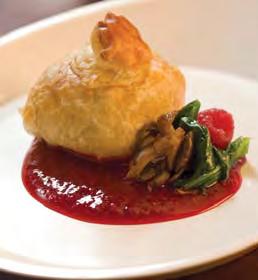DATE: Timeless

COST: Priceless
CIRCULATION: World’s Largest






DATE: Timeless

COST: Priceless
CIRCULATION: World’s Largest





As a young child, I was incarcerated in Bergen Belsen concentration camp. People died daily from cold, disease, and starvation. Our scant food rations consisted of a slice of stale bread served with a muddy liquid laughably called coffee. Later in the day, they served us soup. Barely edible, the soup was made from some crude vegetables, which in better times were used as fodder for barnyard animals. But soon enough, as hunger took its toll, even this putrid liquid became a gourmet dish in our eyes.
One day, officials of the International Red Cross came to the camp for an inspection. While clearly indifferent to our suffering, our German masters nevertheless wanted to impress the visitors. To prove how well they fed us, the Germans brought in barrels of cooked snails. Although to many, eating snails seems disgusting, snails are a European delicacy. We were starving, and to us anything remotely edible looked good. But just the same, being that they are not kosher, no one in our camp touched the snails.
My beloved husband, Rabbi Meshulem HaLevi Jungreis of blessed memory, somehow survived the war eating only meager bread rations. In vain, the Germans had tried to force him to eat non-kosher foods so he could work harder in the slave labor camps. He refused to violate the laws of kosher and emerged from the war looking like a walking skeleton, but with a powerful presence.
Having read these stories, consider the irony of Jews living in a society in which the most delectable kosher foods are available, in a multiplicity of choices, and yet they opt to eat nonkosher. What does that say? How do we understand it?
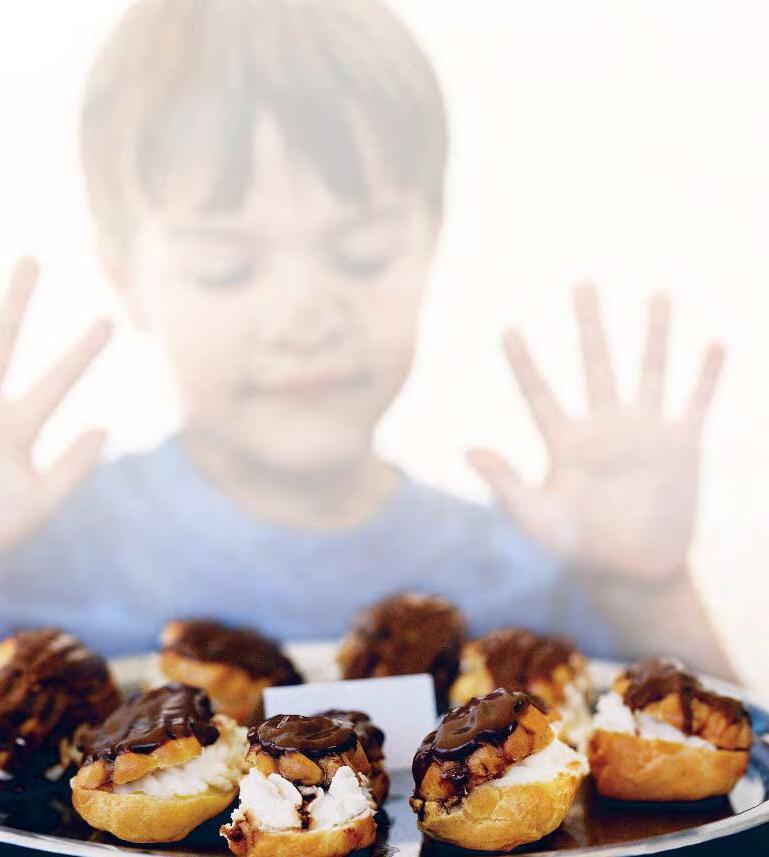
Eating in our society has become a way of life. Restaurants that we frequent are closely linked to our business and social lives. The foods that we enjoy often become an addiction, and we cannot bear to give them up. So we rationalize: We profess our loyalty to the Jewish faith and find no dichotomy in indulging
By Rebbetzin Esther Jungreisour non-kosher preferences. “Kosher,” we loudly protest, “is synonymous with clean,” and we convince ourselves that these laws were instituted in prehistoric times and are no longer relevant.
Kosher, however, does not connote good health or cleanliness. There is only one reason for the laws of kosher and that is that G-d commanded us to keep kosher so that we might become a holy nation and live up to our birthright, for that is our inheritance.
When my grandson Shmuely (now 10) was just two years old, he was with us for our High Holiday services conducted at The Pierre in New York City. As in many fine hotels, when they prepare your room for the night, the housekeepers place a piece of chocolate on your pillow. Shmuely, who like all children loved candy, picked up the chocolate and said, “Bubba, it’s not kosher!” and regretfully handed the chocolate to me.
I write this article in the hope that those indifferent to kosher may probe their souls and take a second look at their Jewish commitment. If Jews in the concentration camps were prepared to accept the gnawing pain of hunger rather than partake of that which G-d forbade, if a little boy of two is willing to give up his chocolate because it might not be kosher, then what possible excuse can we in modern day America have?
It is written in the Book of Genesis (25:30) that when Esau came in from the hunt and saw his brother Jacob cooking lentils, he demanded: “Feed me some of that red, red stuff.” And for that pot of beans, Esau sold his birthright. The question that every Jew must ask himself is: “Am I willing to sell my birthright—G-d’s commandments—for a pot of beans? Do I sell my soul for that lobster or pork?” Is it worth it?
Rebbetzin Jungreis is president of Hineni, author of Jewish Soul on Fire, The Committed Life, and The Committed Marriage, and columnist for the Jewish Press. The Rebbetzin holds Torah classes in New York City every Tuesday and Thursday evening at Hineni, 232 West End Avenue. For more information: www.hineni.org.
We welcome your comments, submissions, and letters to the editor.
Mail: 391 Troy Avenue • Brooklyn, NY 11213
E-mail: editor@kosherspirit.com Advertising inquiries:
EDITOR-IN-CHIEF: Dovi Scheiner
ASSOCIATE EDITOR: Sara Levy
KOSHER EDITOR: Rabbi Chaim Zalman Levy
EDITORIAL CONSULTANTS: Neria Cohen, Shalom Doron, Malka Percal, Robert Rosenberg
ARTWORK: Fernanda Cohen, Tiferet Lieberman
DESIGN: www.SpotlightDesign.com
NOTE: The views of Kosher Spirit are not necessarily those of the .
What makes a Jewish house Jewish? Well, there’s a mezuzah on the doorpost and books of Jewish wisdom on the shelves. Guests are welcome, and when a needy soul knocks on the door, he doesn’t go away empty-handed. And then there’s a little boxor tin can sitting on a counter somewhere. Every day, a little spare change gets dropped in there, plus a few more coins just before Shabbat. When it’s full, it goes to whichever good cause the family chooses.
It could be there’s a top-of-the-line entertainment system in this house; maybe a leading edge computer along with many expensive appliances and gadgets. But none have as great an impact on people’s lives, or fill the house with as much meaning and add as much beauty as the pushka (Yiddish for “little box”).
There are, of course, other ways to give charity. What’s so special about the pushka?
“How often,” said the 12th century sage Maimonides, “is more important than how much.”
Why? Because when you write a check for $365, a good cause gets another $365. But give a dollar every day for 365 days—and your hand becomes a giving hand. As an anonymous Jewish sage wrote, “Aperson is more influenced by the things he does than by the knowledge he is taught.”
So if you want to pick yourself up, get into some elevated habits—like dropping coins in a box.
And it’s not just you—your pushka will pick up your living space as well. “Acharity boxin a home or office redefines the entire space,”
If you don’t yet have a pushka, you can make your own. All you need is a box or can of any material—tin, wood, cardboard, whatever—with a slot in the top for the insertion of coins. We suggest you print the following instructions and use them as a label:
 By Tzvi Freeman
By Tzvi Freeman
the Lubavitcher Rebbe taught. “It is no longer just a home, just an office. It is a center of kindness and caring.”
That is why the Rebbe suggested making a pushka boxa permanent fixture in your home or office. Affixit to a wall, or more correctly: affixyour house to it.
Then there’s your time. Time needs to be elevated, too. One action elevates the time in which it was done. Many actions—even if they are small—elevate so many more moments. That’s why the Baal Shem Tov taught, “Don’t let a day go by without its own act of giving.”
The Kabbalists refer to this as “elevating time, space, and person.” Or you can just call it “making a better world.”
Charity, everyone knows, means being a nice guy and giving your money to someone with less. That’s why, in Jewish tradition, we never give charity. It’s unheard of.
Our sages teach that whatever we have doesn’t really belong to us. We are no more than treasurers. Everything that comes through our hands is given us in order to use for good things, such as educating our kids, or nourishing our body with kosher and healthy food, or giving to people who are short on what they need.
That’s why in Jewish tradition we call it “giving tzedakah.” Tzedakah means “doing the right thing.” Putting your stuff where it really belongs. That’s where your money will reap you the most benefit and bring you the most good— because that’s where it’s meant to be.
Tzvi Freeman is best known for his highly popular compilation, Bringing Heaven Down to Earth.
1. Place strategically for maximum exposure in office and/or home.
2. Be habitual. Get obsessed. Each day, deposit a few coins. Make this awesome act the core event of your day, every day (except on Shabbat and Yom Tov, when handling money is forbidden).
3. Once device is full, choose a worthy cause. (Call them for further instructions). Note: Best when supplemented with random acts of kindness beyond reason.
In the course of the recent presidential campaign, I traveled and spoke in half a dozen states that were deemed “battleground” states. Because of demographics there, turning out the Jewish vote was key. Florida, Michigan, Pennsylvania, and Ohio all boast Jewish populations that are disproportionate to the nationwide number, where we comprise less than 2 percent of the total U.S. population. In every presidential race since the 1932 election of Franklin Delano Roosevelt, the Jewish vote has been solidly Democratic, and the Republican Party made little effort to capture it. Evidencing Republican contempt for the Jewish vote in 1992, James Baker, then cabinet member in the administration of President George H.W. Bush, said: “—— the Jews. They don’t vote for us anyway.”
At the time, when I wrote about Baker’s comment, I made clear that this did not in itself constitute an anti-Semitic diatribe, but was rather a
the Jewish nation, and Jews in general, while the radical left wing continues its attacks on both Israel and Jews.
I traveled around the country in support of the re-election of President George W. Bush in an effort to increase the Jewish vote from his first election, when he received only 19 percent. I urged Jews to cross party lines and vote for the President because of his enormous support for Israel and his willingness to stand up to the international terrorism threatening the U.S. and Israel. Initially, I found great resistance to my position.
The major objection in the Jewish communities I addressed and the reason for their continued support of the Democratic Party was their commitment to hot-button social issues, opposition to privatizing Social Security, and so forth. I encountered a general belief that the Democratic philosophy was overall far better on these issues than the Republican.
political statement that no doubt could be directed at a host of groups—racial, ethnic, or religious— where a particular candidate or party seems unable to secure a significant number of votes.
Traditionally, the 6 million Jews in the U.S. are overwhelmingly liberal in their philosophy, as am I, and this is reflected in our voting patterns. Jews historically have suffered most under right-wing and fascist administrations, the best examples being their treatment under Hitler, Mussolini, and a host of Western and Eastern European countries before and during Hitler’s Third Reich.

Left-wing governments, of course, have also demonstrated their fair share of anti-Semitism. In Josef Stalin’s Soviet Union, Jews were deprived of their rights, tortured, and killed. However, in the years following World War II, left-wing circles around the world—including many in the U.S., England, and France—have overtaken the right-wing in the fervor of their anti-Semitism. In the U.S., the Christian Right has been very supportive of Israel,
My message to Jews in the recent election was that the overriding issue, for Jews and others, should be the danger of international terrorism. This issue should trump all others. After being rebuffed on the first few occasions, I thought of a proposal that satisfied many and allowed them to cross party lines without fearing they would end up in purgatory. I suggested they could have the best of both worlds by voting for George W. Bush while supporting Democratic senators who could represent their values, including appointments to the U.S. Supreme Court. That protection would come from Democratic senators threatening the use of the filibuster. Under the rules of the Senate, if the Democrats have 41 senators, they can, by the threat or use of the filibuster, prevent the passage of any legislation, or the ratification of any appointee needing confirmation by the Senate.
I believe that, particularly in Florida, my efforts were helpful. Especially meaningful to me is the President’s note following the election, in which he wrote:
Dear Ed: Thanks for all your hard work on my behalf. You made a real difference in our victory, and I am grateful. I look forward to thanking you in person.
With very best wishes, George Bush
Edward Irving Koch was born in the Bronx on December 12, 1924. He served as the 105th Mayor of New York City for three terms, from 1978 to 1989.My message to Jews in the recent election was that the overriding issue, for Jews and others, should be the danger of international terrorism.
Ifirmly believe that a flourishing Jewish identity must be based not on victimization but on celebration. This is one of the main reasons I supported the creation of Birthright Israel, which has sent more than 70,000 young Jews to Israel completely free of charge.
The guiding ethos of Birthright Israel is that we must promote and perpetuate the positive experiences of living Jewishly—the connection to one’s people, the emphasis on history and culture, and the wonders of Jewish joy. By bringing Diaspora Jews to Israel, we literally force them out of the routine of Diaspora life and immerse them in a joyous educational experience with other Jews. And what better place to instill a love of being Jewish than in the birthplace of the Jewish people?
In the age of global interconnectedness, barriers between peoples are constantly being broken down. In such an atmosphere, programs that are global and synergistic will be the most effective. The philosophy of Birthright Israel embodies this approach: Every Jew, regardless of geography, upbringing, or affiliation, is endowed with the right to discover his or her history, culture, and homeland. Even in its logistics, Birthright Israel takes the synergistic method to its fullest potential.

Birthright operates on the principle that the Jewish people is a series of interlinked chains, and if we strengthen just one of these links, we strengthen the whole. At the annual Birthright Israel Mega Event in Jerusalem, thousands of Jews from all across the world gather to celebrate Jewish history, culture, and destiny together. I know of no better expression of Jewish joy than this culmination of the 10-day trip, which emphasizes celebration and unity—two quintessentially Jewish concepts
which are interactions with Israeli peers. This reminds the Birthright participants not only that there are young Israelis quite similar to them, but also that Israel is part of a living, breathing Jewish history.
The Jewish people are living and continuing their common destiny. The practical aspects of the mifgashim are extraordinary. Today’s visitors often receive phone calls from the Israelis they have met, who now have places to stay when they visit the Diaspora. We are creating a powerful network of personal connections that reinforce the cosmic idea of one people bound together. Today, when we hear how Israeli and Diaspora Jews are diverging farther and farther apart, such a benefit is not a throwaway perk. It is an essential element of what Birthright Israel seeks to accomplish.
We are creating the infrastructure whereby Birthright alumni can interact with future participants and share their excitement about the trip. This will set in place a network of young people sharing a unique bond that will last throughout their lives. In addition, it creates a continuum in which the trip itself is not an isolated experience but part of a broad, comprehensive framework of Jewish identity formation. For this reason— to maximize the effect of the actual Israel experience—we pay close attention to pre-trip outreach and orientation and to post-trip follow-up.
Perhaps the most radical philosophy behind Birthright Israel is its method, which insists that the initial trip to Israel be a gift from the Jewish people. Indeed, the free trip is one of the most controversial aspects of Birthright Israel. Detractors argue that it is preposterous for the community to pay for “rich” kids to visit Israel. But this line of reasoning fails to appreciate the purpose of the gift. It is not merely financial. All too often, people associate Jewish community life payments.
Federations and other Jewish organizations are constantly soliciting funds, seeking volunteers, and stressing the things we owe the community. This is legitimate. But, in a family, from time to time one must give a gift of love.
Birthright Israel, then, is not just a physical trip to Israel. If we realize the dream of Birthright Israel in its maximum potential, it becomes a movement that brings us back to the essential spiritual beauty of the Jews: one people, bound by a common soul and elevated by joy, love, and service to one another.
Birthright operates on the principle that the Jewish people is a series of interlinked chains, and if we strengthen just one of these links, we strengthen the whole.
Yarden cabernet sauvignon 1999
From 2000 top wineries and 30,000 wines from across the World Yarden Cabernet Sauvignon 1999 won the top award Gold & the Citadelle Trophy,Vinexpo Bordeaux,2003.SRP:$27
Yarden Blanc De Blancs 1997

One of Bon Appétit Magazine's 10 Best Sparkling Wines & One of Wine Enthusiast Magazine's 10 Best Sparkling Wines and Best Bottle-Fermented Sparkling Wine,Worldwide at International Wine and Spirits Competition London,2003.SRP $21

Yarden Heights Wine
Two Time Trophy D’Or Winner,Vinexpo New York (Americas) & Tokyo (Asia).SRP:$23

Yarden Chardonnay2000 Gold Medal Vinexpo Bordeaux,2002.SRP:$17
YARDEN -33 MAJOR AWARDSIN 16 YEARS, 6000 YEARSOF TRADITION,FANTASTIC REVIEWS,ONE GREAT WINERY
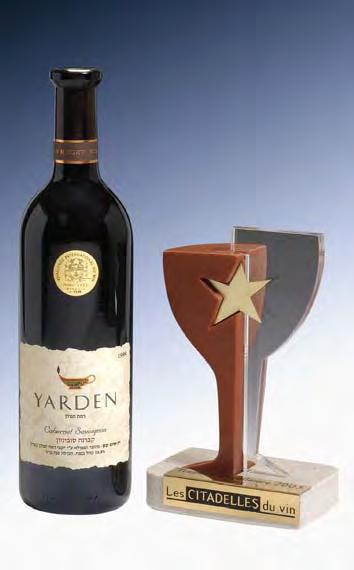


We may imagine that when botanist Linnaeus assigned Latin names to the world’s plants in the 1700s, his expression was somewhere between lip-smacking and beatific as he called the cacao tree—the source of chocolate—“theo-broma,” or “divine food.”
Indeed, he was apparently inspired by Psalms (78:23-25): “The Almighty commanded the clouds from above and opened the Gates of Heaven. He rained down Manna for them to eat ... the food of angels the people ate.” After all, from where else could chocolate have come?
Pre-Colombian America would be a good place to start. When Spaniard Hernán Cortés conquered Mexico in 1519, the Aztec emperor, Montezuma, offered him a spicy, bittersweet drink. Made from cacao beans, this “chocolatl” (“xoco” - bitter; “atl” - water) can be traced back to the Olmec civilization over 2,000 years before. Montezuma prized it more highly than gold goblets; the Mayan nobility buried it with them in their tombs; and cacao beans were legal tender with which to buy sheep, cows and slaves.
Cortés brought it back to Spain, where chocolate became an aristocratic favorite. The Spanish planted cacao in their colonies and off the West African coast. From there, it was transplanted to the Ivory Coast, Ghana, Nigeria, and Cameroon—today the world’s largest producers. Within a century, cacao had found its way across Europe and into England, where “chocolate houses” gave coffee houses stiff competition in the early 1700s.
Not until 1828, however, did an enterprising Dutchman make this divine food sweet. He extracted the fat, ground the remains into a powder which he dissolved in hot water and, with the addition of


sugar, voila!—created the world’s first sweet chocolate drink.
Still, no one ate chocolate until 1847, when an English firm added cocoa butter and sugar to ground cacao beans to create sweet, hard chocolate. In 1876, the Swiss added milk to the mixto create the hard milk chocolate we all love.
Producing that heavenly taste requires some earthly steps. The foot-long seedpods of the cacao trees are harvested, the beans removed and fermented under banana leaves, then dried to prevent mold from forming.
The beans are roasted and the meaty kernels or “nibs” extracted. Grinding the nibs produces a liquid, the non-alcoholic cocoa “liquor.” Pressing this cocoa liquor through filters separates the non-dairy cocoa “butter” from the cocoa powder.
Cooking chocolate is molded from the unsweetened cocoa liquor. To make dark or milk chocolate, cocoa liquor is combined with cocoa butter, sugar, vanilla, and/or lecithin—and, for milk chocolate, powdered milk.
The mixture is then ground, reducing it to a fine paste. The chocolate proceeds to smoothing machines that heat it to 160º F for several days. Complex chemical changes develop the delicate chocolate flavor.

Seemingly, chocolate should present few kosher difficulties. After all, it consists almost entirely of the cocoa liquor and cocoa butter that come from the cacao beans. Afew additives, yes, but these should be easy to supervise, right?


Ingredient substitution is one of the marvels of modern food production, and this forces us to check products very carefully. For example, some countries permit use of
“cocoa butter equivalents” (CBE) in chocolate, substituting for natural cocoa butter. These fats may be from non-kosher sources. This is even more likely in the case of “cocoa butter substitutes” (CBS) widely used in the “chocolate-flavored” coatings found on ice creams, cakes, and candies. The added ingredients also require inspection: Lecithin, an emulsifier to maintain proper viscosity during production, can contain non-kosher ingredients. And the powdered milk used in milk chocolate may be produced on non-kosher equipment. Often, food production presents even greater kosher challenges than do ingredients. In chocolate manufacture, the machines—hot during production—are difficult to clean with the boiling water that the kosher code requires. Water and chocolate, alas, do not mixwell—the fudge-like result can clog the machinery completely! When non-kosher ingredients are used on the equipment (or dairy ingredients before a run of non-dairy dark chocolate) it takes much care and effort— daunting to most companies—to make it properly kosher.
Orders from On High Chocolate inspired Linnaeus to think of heaven; the Kabbalists enlighten us that everything we eat has a bit of holiness—a “spark” of divine energy released when we eat foods prepared in accord with the divine plan of the kosher code. A pioneer in providing kosher chocolate supervision of the highest order, the OKis proud to oversee production of some of the world’s finest chocolate. So when you see the “OK” symbol on a chocolate product, you can be sure that it’s not just divine—it’s perfectly divine.

It's 1:00 pm on Friday at the Mandalay Bay in Las Vegas, and my weigh-in is in three hours. I've been limiting my fluids-"drying out"-to make the required weight of 142 pounds. I count the minutes until I step off the scale and have my first few sips of Pedialyte. As thirsty as I am, it will taste delicious!
Following that is Shabbat. Thank G-d for Shabbat. I look forward to turning off my phone and escaping from the tension and pressure of fight week. On Shabbat, I will finally have time to rest. For me it is a time for reflection, inspiration, and motivation for the coming week. It will also give me the inner strength and focus I need for my boxing match on Saturday night.
in hospital. Her roommate was an Orthodoxwoman. I metthe woman’s husband, and we fell into a deep conversation about Judaism, boxing, and everything in between.Before I left, he took my contact information to pass along to a local rabbi. Rabbi Zalman Liberow, from Chabad of Flatbush, called my house a few times and invited me to come to the synagogue. At first, I was not very enthusiastic about going. After some thought however, I decided to see what it was like.What instantly made me comfortable was the fact that people from all different walks of life were sitting and praying together.
I began to go to the synagogue every few weeks for Shabbat. My visits were short at first, but every time I went, I felt that my battery was recharged and I felt blessed for the following week.
BY DMITRIY SALITASalita. Originally from Odessa, Ukraine, I moved to America when I was nine years old.At 13, I joined the Starrett City Boxing Club in Brooklyn, NY, and began to train and compete.I was always very serious about boxing and felt a great sense of responsibility every time I stepped into the ring.
Boxing helped me become more spiritualand develop a personal relationship with G-d.Before every training session and especially before competing, I would say a few prayers to prepare myself. I always felt that I was guided and helped. Even when things did not go the way I thought they should, I believed that everything that happens is for the best.
When I was 14, my mother landed up

As time went on, I began to take upon myself different things that may seem minute, but to me felt like real changes—like not turning on the coffee maker or not surfing the Internet on Shabbat.My rabbi explained to me that when a person comes from a non-religious background and takes upon himself a commandment, it causes great positive change. By taking on a Torah commandment, the person is making a solemn choice to get closer to G-d and follow the right path. Such words motivated me to become increasingly stronger in my observance.
I also grew stronger in boxing and was winning tournaments.There came a point where I began to feeluncomfortable about fighting and training on
Shabbat.To me, being in the ring is very serious business. Many things can happen, andI have to feel at peace with myself in order to overcome my opponents.
Before going to the National Championships in the year 2000, on the advice of my rabbi, I decided not to fight on Shabbat.I was not the favorite to win going in, but thank G-d all turned out well and I won.After that, I won the Golden Gloves and turned pro.
In my contract is a clause stating that I don’t fight on Shabbat or any other Jewish holiday.Many people ask me how I can combine Judaism and professional boxing. Chassidic philosophy teaches us that Judaism must fit into every part of our lives. It exists in science, art, and for me, even in boxing. We are all placed in certain situations for a reason. Whoever we are, wherever we are, we can elevate the world around us. May our random acts of goodness and kindness hasten the coming of the final Redemption. Good Shabbos!
Dmitriy “Star of David” Salita is undefeated (20-0) in his professional boxing career. He is the subject of the forthcoming Disney film, Golden Boy.
Darkness was beginning to fall, and the monastery refectory was filled with the sounds of children finishing their dinner. Brother Jean-Paul, the head priest, walked slowly past the refectory, his long robes trailing along the highly polished floors. He knew that almost all of the boys were Jewish. Some of them had been at the monastery for several years. Everything Jewish had been withheld from them, and they had been taught Catholicism. Initially, this was done for the children’s own safety, so that no German would recognize their true origin, but now…
Brother Jean-Paul let out a sigh of relief. The rabbis would not be back at this late hour. They had been unable to locate the evidence he had requested. It was not surprising. He knew that the children’s documents had been destroyed, along with the people to whom they had belonged. There was no way the priest could be forced to reveal
By Ruth Benjamintheir identities as Jewish children. Their parents had begged him to look after them, and he had done so. He had withstood the Germans who wanted to take away the children’s lives, and he would withstand the rabbis who wanted to take away their souls and return them to Judaism.
The priest was uneasy when, at this evening hour, the two young rabbis appeared yet again at the gate of the monastery. He let them in, explaining once again that his monastery had not taken in any Jewish children, as he had not wanted to endanger the gentile ones. Several of the other brothers backed him up. Jewish children? Never! Polish children, yes, with Polish names. Jewish children would have been far too
dangerous. The rabbis, he knew, did not believe him, but that didn’t matter, did it? They could prove nothing.

Somewhat hesitantly, Brother JeanPaul acceded to their request to see the children, who were now preparing to go to sleep. He would be with the rabbis to make sure they did not try any of their Jewish tricks. He would not let them get too close to the children.
As the group approached the children’s dormitory, one rabbi suddenly shouted: “Shema Isroel, HaShem Elokeinu HaShem echad.”
Without exception, the children dissolved into tears. Some covered their eyes. They called out for Mama and Tatte, speaking in the broken Yiddish their souls had not forgotten.
The priest knew that he had lost.
Ruth Benjamin is a clinical psychologist, university lecturer, and prolific author. She lives in Johannesburg, South Africa.
Dear Rabbi Moss,Q:
Although I was raised in a traditional home, was brissed and bar mitzvahed, I have never had any faith or “religious” belief. I am now aged 34 and would describe myself as an atheist. I have no wish to be buried in a Jewish cemetery (I intend to write my Will to make this clear) and have married a non-Jew in a civil ceremony.
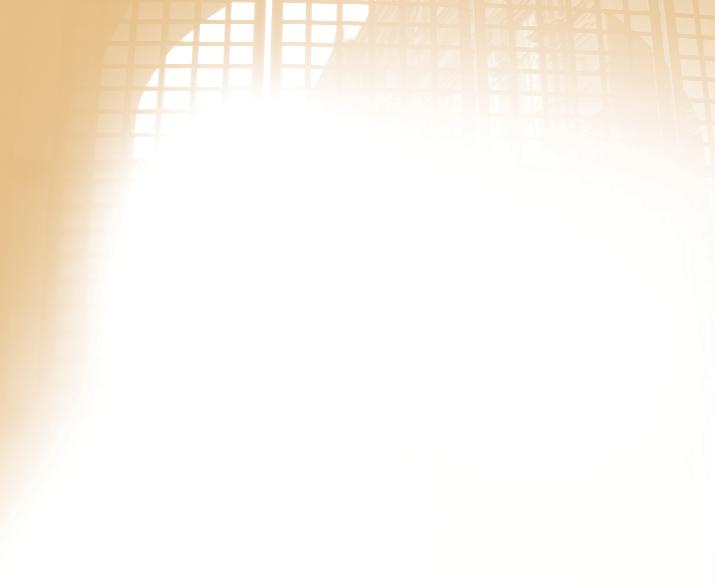
My question is, as a consequence of my effective opting-out, can I consider myself officially non-Jewish, or do I need some sort of form or dispensation to be officially no longer Jewish?
Many thanks for your help with what is perhaps an unusual question.
Best wishes, Edward

Imagine, if you will, the difference between a homeland visit by Julius Caesar and one by Moses.
Julius Caesar disembarks at Aeroporti di Roma in Italy and immediately senses that something is amiss. The people don’t speak his language. The local religion is entirely different. And Rome is no longer the cultural capital of the world. He has nothing in common with the people of his land.
At Ben Gurion Airport in Tel Aviv, the scene unfolds very differently. An elderly Moses steps out of an airplane. He is overcome with emotion as his foot touches Israel’s soil for the first time. Having led his nation through the desert for forty years and then dying without reaching the Promised Land, Moses finally has made it.
“Shalom,” says a young, Russianborn airport worker who approaches him to offer help.

Over three thousand years separate these men. One was born in Egypt; the others in Moscow, Ethiopia, New York, Casablanca, Bombay, Sydney, Paris, and Johannesburg.Yet they share the same language, faith, tradition, and life view. Moses turns his face toward Heaven and shouts, “Blessed is the Al-mighty, that my people are still alive!”
The Jewish nation has outlived empire after empire of would-be persecutors. Ancient Egypt, Persia, Ancient Greece, Ancient Rome— where are they now?
What is the miracle of Jewish survival?
It is our unified Jewish faith, history, and heritage.
“Shalom,” replies Moses, amazed that the language spoken in this wondrously modern place is the same one he spoke thousands of years ago. He notices a group of men praying in a corner of the airport. As he approaches them, he sees that each is wearing Tefillin and a Tallis. After they finish praying, Moses talks with them and examines their religious articles. They are the same as those he prescribed at Mt. Sinai.
We have survived throughout the ages because of the unbroken chain of our heritage. When the 25th of Kislev comes, the first Chanukah light is kindled in Leningrad and Helsinki, Melbourne and Ottawa. Jews all over the world come together to make the same blessing. On the 15th of Nissan all Jews sit together at a Passover seder. We eat the same food, the same matzoh. Some recite the whole Haggadah, some a summary of it, and others sing a few songs. Three thousand three hundred years is a long time to keep the same menu.
Dear Edward,
A:
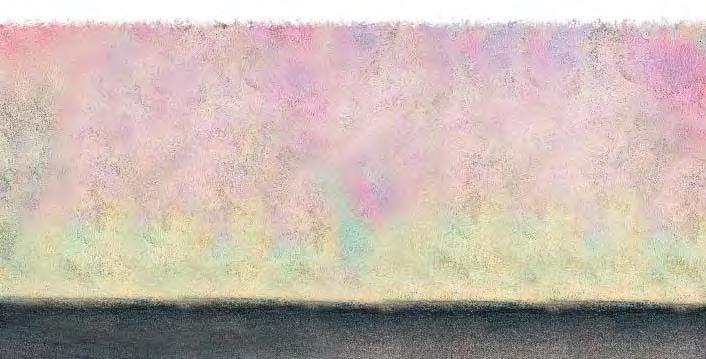
I would like to help you, but I feel there’s nothing I can do. According to your question, you have done everything possible to negate your Jewishness. In practice, you do not keep Jewish tradition; in belief, you are an atheist; in family life, you have married a non-Jew and thus won’t have Jewish children; and even in death, you are determined not to be buried in a Jewish cemetery.
One would think that all this would be enough to confirm your un-Jewishness. But no! For some reason, you are still unsatisfied. You still feel Jewish! So much so, that you feel you need official dispensation! And so, being an atheist, to whom do you turn to solve this problem? Adoctor? Apsychiatrist?
The civil celebrant who married you? No. You turn to a rabbi!
I’m reminded of the child who ran away from home, but ended up just going around and around the block because his parents told him never to cross the road by himself.
I’m sorry, Edward. There is nothing more you can do. You are as Jewish as Moses, Ariel Sharon, and the Chief Rabbi of Wales. In fact, it seems that being Jewish is the most dominant factor of your personality. It is even influencing the place you want to be buried. (Why would an atheist care where they are buried?)
You see, Edward, Jewishness is not a belief, a feeling, a conviction, or a lifestyle. It is a state of being. We can either celebrate it or fight against it. But it will always be there. So why not celebrate it?
Aron Moss teaches Kabbalah and runs spiritual services in Sydney, Australia.
Rabbi Israel Meir Lau was Chief Rabbi of Israel from 1993 to 2003.The ancient holy city of Tsfat in the Upper Galilee calls to the innermost aspects of the Jewish soul. Within its cobbled alleyways and limestone arches are people and places whose essence permeates the city’s atmosphere. Here you will discover the heart of Kabbalah in all of its myriad forms.


Tomb of Rebbe Shimon Bar Yochai, 2nd century C.E. sage and author of the Zohar—the Book of Splendor—the central text of Kabbalah or Jewish mysticism.
This 21st century student and teacher of Kabbalah embodies the spirit of the biblical phrase “Love your neighbor as yourself.” Lowenthal’s art has inspired many a seeker of Jewish wisdom.
From his original 1960s light show designs for Pink Floyd and Jimi Hedrix to images of the inner world of the Hasidim, this French Hasidic photographer will blow your mind.
Through his art of simple forms and primary colors, Friedman— a brilliant Jewish thinker and Torah scholar—expresses the most profound Kabbalistic concepts.
An open field in the 16th century where Tsfat kabbalists created the Kabbalat Shabbat ceremony. The holy Ari sanctified this spot and requested that this synagogue be erected.
The Holy Ari chose this synagogue, originally known as the Synagogue of the Prophet Elijah, as his place of worship. According to legend, he often secluded himself inside the structure’s eastern wall, where the Prophet Elijah visited him to discuss issues of the higher spheres.
This magnificent ancient Sephardi synagogue is designed according to Kabbalistic principles. Legend has it that the entire structure flew overnight from Spain, its original home, to its current location in Tsfat.
A magnet for 20-something seekers, Livnot u’Lehibanot attracts Jews from across the globe to participate in their profound programs.
Thousands of travelers looking for a room have ended up finding their roots at this hostel and learning center. Run by Chabad Hasidim, Ascent is famous for its hospitality and open approach to Jewish revival.
The purifying waters of this ritual bath gush forth straight from the mountain source. Immersion in this chilly pool, it is said, opens the higher spheres of body and soul.
Connect at the tombs of our holy mystics; access the vortex of these spiritual giants. This windy hillside has been an inspiration to those searching for inner strength and answers to their deepest prayers. The tomb of the Arizal (or Ari), 16th century mystical master, rests at the center of this magical graveyard.
A magnificent structure at the base of the Old City, this community sheds bright light across the Jewish world. Rebbe Nachman says that the dark forces of the world have only one mission: to make a person depressed. Once a person is in such a state, the gate is open to all transgressions. By being happy, one is protected and is on the path to holiness!


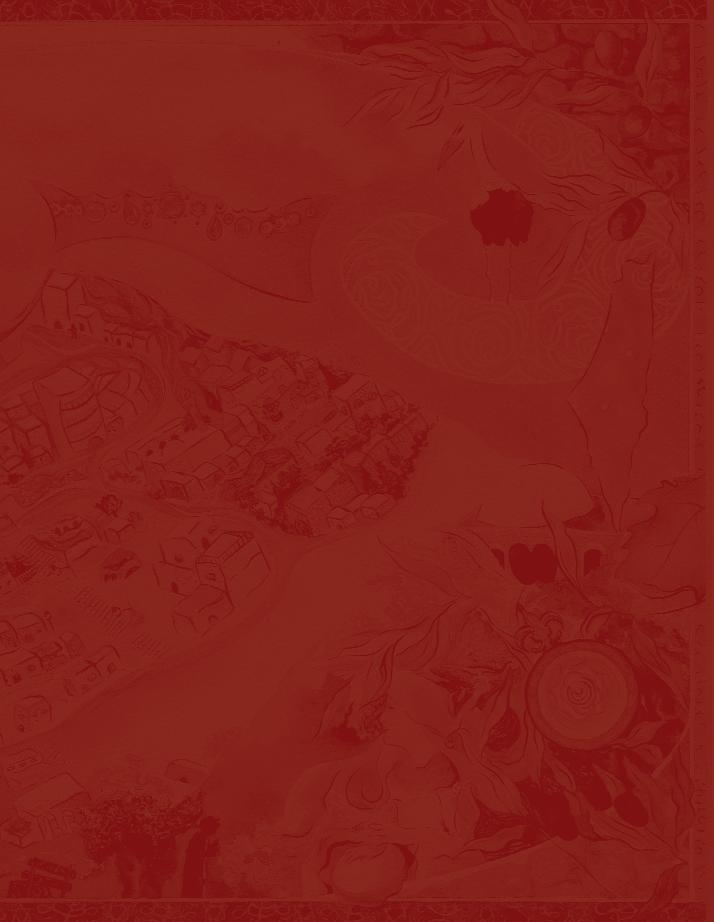
The gravesites of Noah’s son, Shem, and grandson, Ever, are hidden in a mountainside cave high above the Old City. According to Avraham, Shem and Ever were the greatest of their generation, spiritual giants.

Olive groves and gushing streams, rocky outcrops and waterfalls, forests and flowered meadows, this is the hill and dale of the legendary Galilee. Breslover Chassidim are often found engaging in hitbododut, or Jewish meditation, as taught by their Rebbe Nachman, and you may hear cries of “Abba!”—Father! an inspirational way to connect with the Holy One.
Concentrated joy is the only way to describe the experience of Shabbat at this unique synagogue of the legendary Rabbi Shlomo Carlebach. Transcend your own boundaries, dance around the bima, pray as you’ve never prayed
In the heart of the Old Jewish Quarter, this charming hostel is run by a trio of disciples of the Baal Shem Tov, father of the Hasidic movement.
Over the past two years, I’ve crisscrossed the country giving cooking demonstrations for my books Kosher
By Design and, now, the newly released Kosher By Design Entertains. The audiences are always wonderfully inquisitive. One of the most common questions I receive is: “Do I have to keep kosher to use your books?” I always smile and reply, “Of course not—but if you’re looking to create a more Jewish experience in your home, it certainly helps.”
The quality of kosher products has improved remarkably. Kosher wines, for example, are no longer comparable to cough syrup. In fact, kosher wines are top award winners today. You can find a wide choice of varietals from vineyards as far away as Chile and Australia. Israeli wines are superb. You’ll also come across fine balsamic vinegars and even truffle oils on the kosher market.
Supermarkets are paying attention to kosher shoppers. The kosher aisle in many
Growing up in an observant home, running a kosher kitchen is second nature to me. But I’ve noted an amazing trend in my travels: Multitudes of non-traditional Jews are migrating to traditional practices. And with food occupying such a vital role in Jewish life and celebrations, setting up a kosher home becomes an intensely hands on, down-to-earth component of this grassroots return movement.
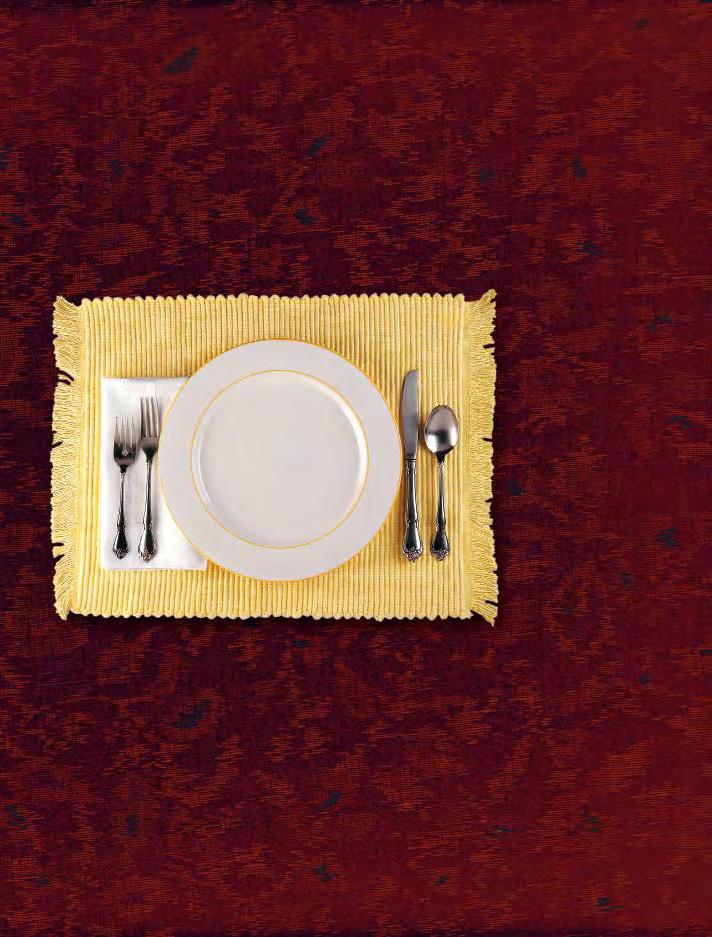
Kosher is big business today, constituting a $4 billion a year industry. Since 1992, sales of kosher products have steadily increased at a yearly rate of 13% to 15%. In New York, there are even kosher supermarkets that rival the size and variety of general markets.
stores is no longer a couple of shelves, but a full aisle with a large variety of goods. Trendy health-oriented stores, such as Trader Joe’s, publish updates on their available kosher stocks.
There are many fine books on the market that can guide you through the process of establishing a kosher kitchen. However, I recommend that a beginner consult a rabbi or a mentor who is kosher observant to make sure: you have the right equipment (e.g. separate cookware and dishes for milk and meat), you know how to recognize kosher symbols on food packaging (some are national, some are local, some are organizational, some are individual), you
know how to recognize non-kosher food additives, you appreciate and understand the spiritual foundation for the path you are taking.
A few months ago, I read the fascinating story of Brooke Collier, a successful food writer who was zooming up the corporate ladder at a major gourmet magazine. Her chic, fast-paced career afforded her the opportunity to review the finest foods in the most upscale restaurants. Then “something just clicked” and she began to explore the meaning of her Jewishness. Her learning inspired significant lifestyle adjustments, including keeping kosher. Her seriousness was clinched when she left the cushy job that required her to eat non-kosher foods such as shellfish and pork.
The very week I read her story, I attended the Kosher World conference in Manhattan. I stopped into a booth to look at some Asian products and noticed a nametag on a fellow browser—Brooke Collier! “Oh my, I read about you just this week,” I blurted. Looking at my nametag, she exclaimed: “And your book helped me realize kosher isn’t just briskets and kugels.” As we discussed her journey, she remarked: “There’s elegance, along with a sense of elevation, living this way.” Today, Brooke lives in Israel as a new immigrant and continues to write about her passion for foods.
For any Jew entertaining the idea of “going kosher,” there has never been an easier, more opportune time. As so many of my readers reflect, when it comes to quality, taste, and choices, kosher cuisine is now world class.
Susie Fishbein is the author of bestselling cookbooks Kosher By Design and Kosher By Design Entertains (ArtScroll Mesorah Publications). She holds an MS degree from Brooklyn College and resides in Livingston, N.J., with her husband and four children. She is currently working on a new volume for children, Kosher By Design— Kids in the Kitchen, due in November 2005.
Kosher wines are top award winners today. You can find a wide choice of varietals from vineyards as far away as Chile and Australia. Israeli wines are superb.












